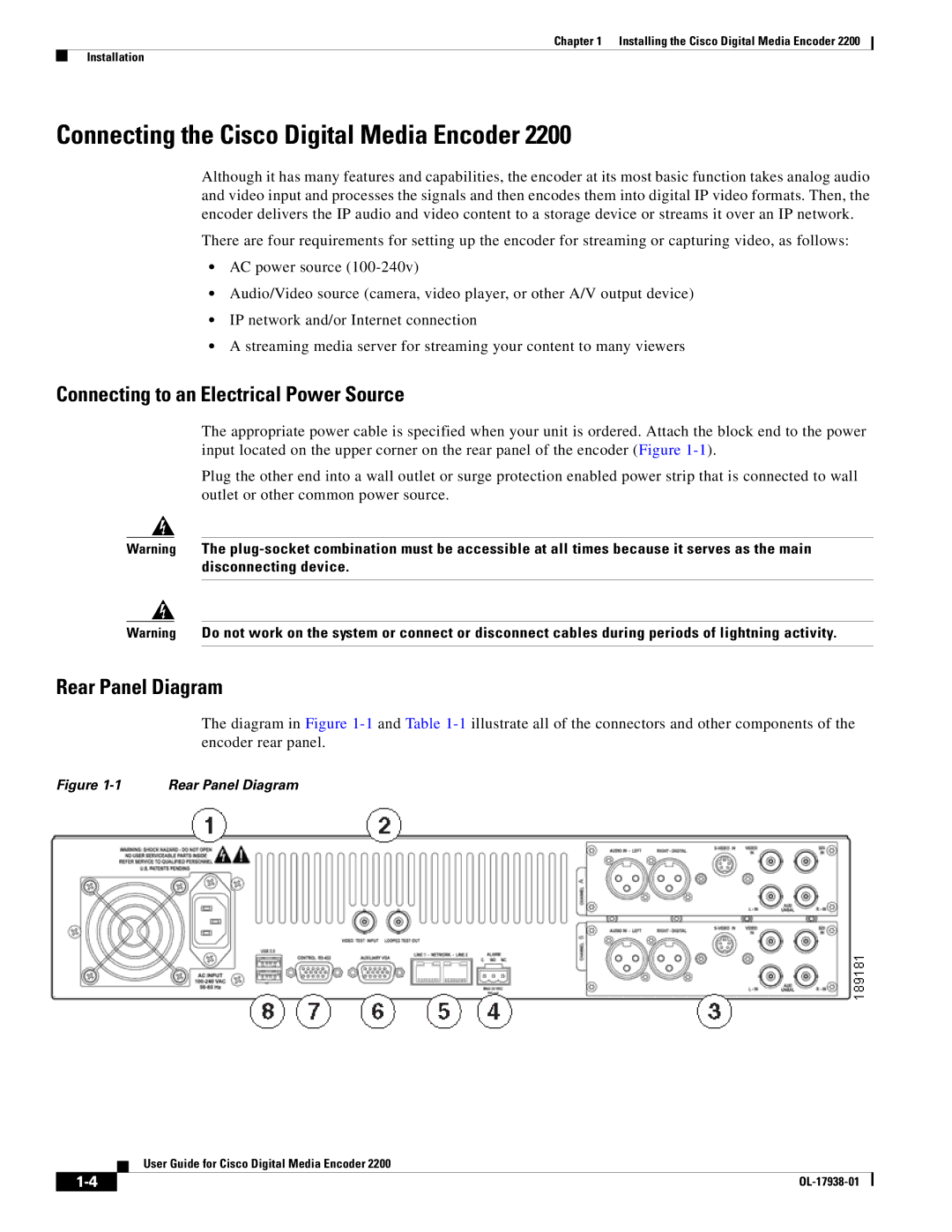
Chapter 1 Installing the Cisco Digital Media Encoder 2200
Installation
Connecting the Cisco Digital Media Encoder 2200
Although it has many features and capabilities, the encoder at its most basic function takes analog audio and video input and processes the signals and then encodes them into digital IP video formats. Then, the encoder delivers the IP audio and video content to a storage device or streams it over an IP network.
There are four requirements for setting up the encoder for streaming or capturing video, as follows:
•AC power source
•Audio/Video source (camera, video player, or other A/V output device)
•IP network and/or Internet connection
•A streaming media server for streaming your content to many viewers
Connecting to an Electrical Power Source
The appropriate power cable is specified when your unit is ordered. Attach the block end to the power input located on the upper corner on the rear panel of the encoder (Figure
Plug the other end into a wall outlet or surge protection enabled power strip that is connected to wall outlet or other common power source.
Warning The
Warning Do not work on the system or connect or disconnect cables during periods of lightning activity.
Rear Panel Diagram
The diagram in Figure
Figure 1-1 Rear Panel Diagram
User Guide for Cisco Digital Media Encoder 2200
| ||
|
